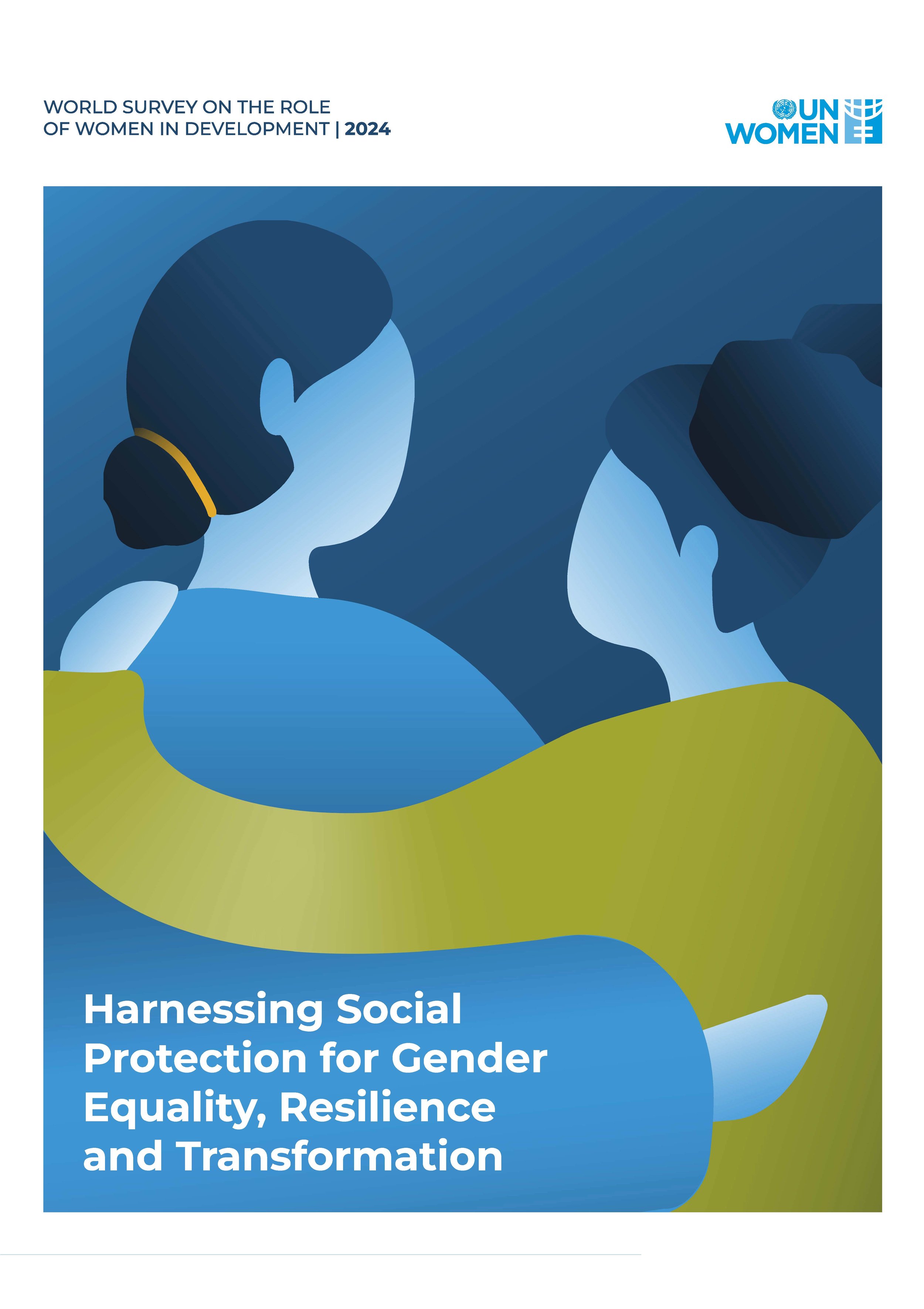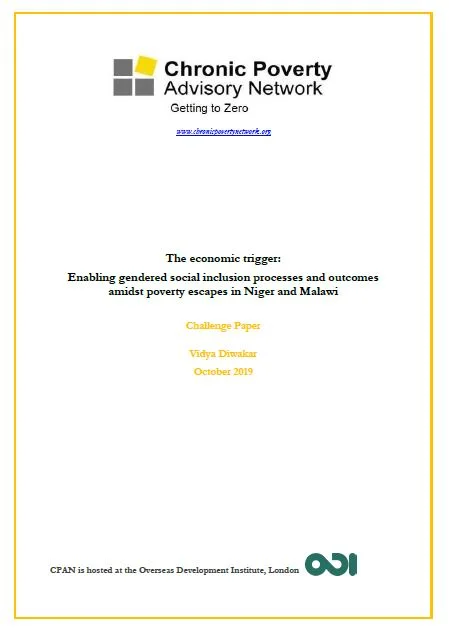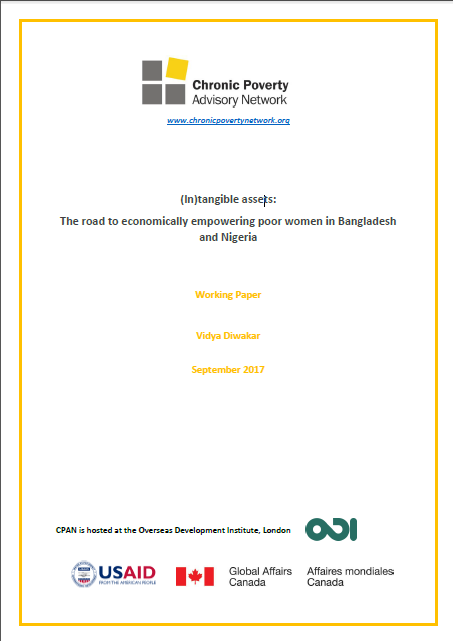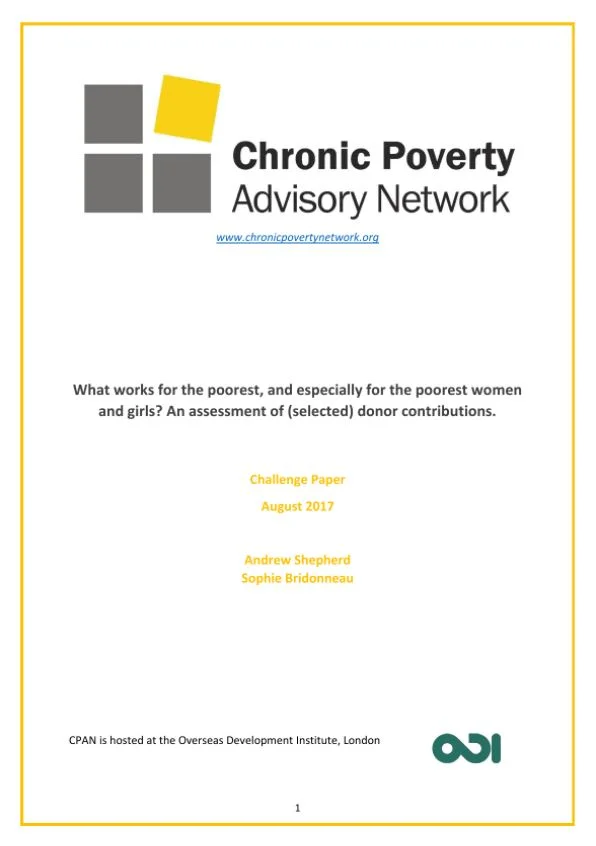What works for the poorest of poor, and in particular the poorest women and girls? This is the central question of CPAN’s new project.
About one in five persons in developing countries live with less than $1.25 per day, the majority of which are women and girls. In light of the first Sustainable Development Goal - the eradication of poverty in all its form by 2030 - international agencies and donors must put the most vulnerable groups at the centre of their agenda.
Women and girls are more likely to be poor and transmit it to their children than their male counterparts. In developing countries, chronic and extreme poverty are accentuated by social norms and laws. Women and girls bear a double burden: unpaid domestic work and work outside the household. They have limited access to resources restricting them to sectors where earnings are low and uncertainty is high. In extremely poor areas, where traveling distances to water sources, schools, health centres and roads are long, women and girls are more likely to be subject to violence and insecurity, which often results in school drop outs or poor health, therefore drastically reducing their chances escaping poverty.
For all these reasons and many more, women and girls must be a priority target group for international agencies and donors.
This project has two objectives. Firstly, it aims at identifying the policies and programmes which have allowed to reduce chronic and extreme poverty and, in particular, which have improved the livelihoods of chronically poor women and girls. Secondly, it will analyse the trends in donors’ strategies to reduce extreme or chronic poverty among women and girls, as well as their actions. This will be done through a thorough study of official strategy documents to understand the importance of poverty eradication in their agenda and by assessing their efficiency through a synthesis of evaluations and reviews of their programmes and policies.
- Project Event on International Women's Day : Women’s Economic Empowerment and the practical measures to ensure no one is left behind
IWD 2017 CPAN Blog series:
- #1 - The road to zero poverty is paved with efforts to educate chronically poor women and girls?
- #2 - The poorest women have a right to earn and spend their own money too!
- #3 - What can be done to empower the poorest women?
- #4 - CPAN Event on 2017 IWD
This project has been commissioned and is funded by Global Affairs Canada (GAC), Government of Canada.
Photo credits: Women and children carry water India. Photo: © Ray Witlin / World Bank Photo ID: IN061S15 World Bank








